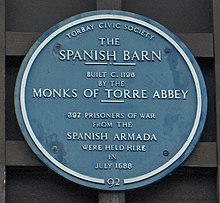Heritage interpretation

Heritage interpretation is the communication of information about, or the explanation of, the nature, importance, and purpose of historical, natural, or cultural resources, objects, sites and phenomena using personal or non-personal methods.
Heritage interpretation may be performed at dedicated interpretation centres or at museums, historic sites, parks, art galleries, nature centres, zoos, aquaria, botanical gardens, nature reserves and a host of other heritage sites. Its modalities can be extremely varied and may include guided walks, talks, drama, staffed stations, displays, signs, labels, artwork, brochures, interactives, audio-guides and audio-visual media.
Those who practice this form of interpretation may include rangers, guides, naturalists, museum curators, natural and cultural interpretive specialists, interpretation officers, heritage communicators, docents, educators, visitor services staff, interpreters or a host of other titles.
Definitions of heritage interpretation
"Heritage interpretation is an educational activity which aims to reveal meanings and relationships through the use of original objects, by firsthand experience, and by illustrative media, rather than simply to communicate factual information."
Freeman Tilden for the US National Park Service
"Any communication process designed to reveal meanings and relationships of cultural and natural heritage to the public, through first-hand involvement with an object, artifact, landscape or site."
Interpretation Canada (see link below)
"Interpretation is a mission-based communication process that forges emotional and intellectual connections between the interests of the audience and the meanings inherent in the resource."
John Veverka & Associates
"Interpretation is a communication process (based on Tilden's Principles of: Provoke, Relate and Reveal, address the whole, and strive for message unity) designed to reveal meanings and relationships of our cultural and natural heritage, to the public, through first hand involvement and experiences, with objects, artifacts, landscapes, stories or sites. Modified from the Interp. Canada definition."
The National Association for Interpretation in the United States (see link below)
"Interpretation enriches our lives through engaging emotions, enhancing experiences and deepening understanding of people, places, events and objects from past and present."
The Association for Heritage Interpretation (see link below)
"Interpretation is the process of communicating messages and stories about our cultural and natural heritage, providing the audience with inspiration and a wider understanding of our environment. Or quite simply, interpretation is about telling stories."
Scottish Interpretation Network (see link below)
"Interpretation refers to the full range of potential activities intended to heighten public awareness and enhance understanding of cultural heritage site. These can include print and electronic publications, public lectures, on-site and directly related off-site installations, educational programs, community activities, and ongoing research, training, and evaluation of the interpretation process itself."
ICOMOS "Ename" Charter for the Interpretation and Presentation of Cultural Heritage Sites 2008 (see links below)
"Tilden's principles" of interpretation
In his 1957 book, "Interpreting Our Heritage", Freeman Tilden defined six principles of interpretation.
1. Any interpretation that does not somehow relate what is being displayed or described to something within the personality or experience of the visitor will be sterile.
2. Information, as such, is not Interpretation. Interpretation is revelation based upon information. But they are entirely different things. However all interpretation includes information.
3. Interpretation is an art, which combines many arts, whether the materials presented are scientific, historical or architectural. Any art is in some degree teachable.
4. The chief aim of Interpretation is not instruction, but provocation.
5. Interpretation should aim to present a whole rather than a part, and must address itself to the whole man rather than any phase.
6. Interpretation addressed to children (say up to the age of twelve) should not be a dilution of the presentation to adults, but should follow a fundamentally different approach. To be at its best it will require a separate program.
For the past 50 years, Tilden's principles have remained highly relevant to interpreters across the world. In 2002 Larry Beck and Ted Cable published "Interpretation for the 21st Century - Fifteen Guiding Principles for Interpreting Nature and Culture", which elaborated upon Tilden's original principles.
See also
- Blue plaque
- First-person interpretation
- Interpretation centre
- Interpret Scotland
- Living history
- Natural Heritage Education
- Thematic Interpretation
- The Association for Heritage Interpretation
- The Vital Spark Interpretation Conference
- Visitor center
References
- Beck, L, Cable,T. (1998) Interpretation for the 21st Century: Fifteen guiding principles for interpreting nature and culture. Sagamore Publishing, ISBN 1571671331
- Ham, S. (1992). Environmental Interpretation: A Practical Guide for People with Big Ideas and Small Budgets. Fulcrum Publishing, ISBN 1555919022
- Silberman, N. (2006). "The ICOMOS Ename Charter Initiative: Rethinking the Role of Heritage Interpretation in the 21st Century." George Wright Forum
- Tilden, F. (1957) Interpreting our Heritage. University of North Carolina Press, North Carolina ISBN 0807840165
- Veverka, J. (1995)"Interpretive Master Planning". Acorn Naturalists, Tustin, CA.
External links
- Association for Heritage Interpretation (UK)
- Interpretation Australia
- Interpretation Canada
- Interpret Europe
- Interpret Scotland
- National Association for Interpretation (US)
- Scottish Interpretation Network
- ICOMOS "Ename" Charter
- ICOMOS International Committee on Interpretation and Presentation
Online resources
- A Sense of Place - An interpretive planning handbook. James Carter
- Basic Interpretive Skills - A Course Manual. Thorsten Ludwig
- Distilling the Essence - New Zealand Department of Conservation Interpretation Handbook and Standard
- Scottish Museums Council Interpretation Guidance
- Scottish Natural Heritage Interpretation Guidance
- Tasmanian Thematic Interpretation Planning Manual
- The Interpret Scotland Journal - Back issues
- JVA Interpretive Planning Resource Library
- Heritage Destination Consulting Interpretive Resource Library
- Heritage Interpretation Centres. The hicira handbook
